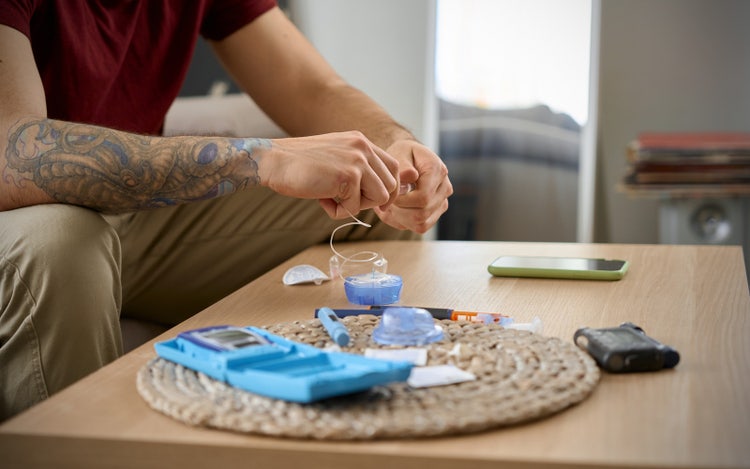The Surest approach to diabetes

The Surest approach to diabetes
According to the CDC, more than 38 million Americans have diabetes, and approximately 90—95% of them have type 2 diabetes.
The Diabetes Federation notes that the occurrence of diabetes is driven by socio-economic, demographic, environmental, and genetic factors. However, they say it is possible to reduce the impact of diabetes by taking preventive measures for type 2 diabetes and providing early diagnosis and proper care for all types of diabetes.
If you’re among those impacted by diabetes, the Surest health plan has a number of tools and resources to support you.
What is diabetes?
When our bodies digest food, carbohydrates are broken down in the blood to create glucose, the energy source that powers our cells. But blood glucose can’t pass directly into our cells. It needs help, so rising blood sugar levels trigger the pancreas to create a hormone called insulin. Insulin serves as a kind of usher to open the cells and let glucose inside, where it can be burned to create energy.
In diabetes, the pancreas may fail to make insulin, or the body may fail to use the insulin properly. This allows glucose to build up in the bloodstream, leading to a condition called hyperglycemia. Long-term hyperglycemia damages the body and can cause organs to fail. Complications like heart disease, eye problems, and kidney disease are often associated with high levels of blood sugar.
Types of diabetes
It’s important to clarify that there are at least 3 types of the disease.
Gestational diabetes occurs in women who are pregnant but have never been diagnosed with the disease before. Gestational diabetes occurs in about 10% of pregnant women, and can cause complications for the pregnancy. Blood sugar levels usually return to normal following delivery, but both the mother and the child are at higher risk for type 2 diabetes later in life.
Although it can present at any time, type 1 diabetes tends to affect younger people. In type 1 diabetes, the pancreas does not make insulin. People who have this disease—about 5–10% of all cases—must take insulin daily to survive.
But it’s the rate of type 2 diabetes that has exploded worldwide in recent decades. In type 2 diabetes, the pancreas creates insulin, but the body does not make efficient use of the hormone, causing blood sugar levels to rise. Type 2 diabetes is usually diagnosed using the hemoglobin (A1C) test. This blood test indicates a person’s average blood sugar level for the past 3 months. According to the CDC, a normal A1C level is below 5.7%, a level of 5.7% to 6.4% indicates prediabetes, and a level of 6.5% or more indicates diabetes.
As type 2 diabetes grows, doctors and researchers have come to understand more about it—and how to treat it. Studies have made clear that controlling blood sugar—glucose—can reduce complications like damage to kidneys and other organs and tissues. While there is clearly a genetic predisposition to developing diabetes, environmental factors like quality and quantity of nutritious foods, lack of physical activity, pollution, stress, and socioeconomic status have all contributed to the rise of type 2 diabetes.
This means lifestyle has a direct impact on diabetes. In fact, a large component of type 2 diabetes treatment is self-management.Diabetes and health insurance
Prior to 2014, many health insurance companies did not offer affordable plans for treating diabetes. New mandates have made access to insulin, insulin pumps, test strips, and other necessary equipment available through health insurance.
But insulin costs have skyrocketed, and rising prices for other medications add to the upward spiraling cost of diabetes management.
For Surest members, access to care starts with a simple search by symptom or condition . The plan is designed to show upfront prices for doctors, specialists, treatment, and equipment. They can compare care options and programs that may be available and find opportunities to save on health care expenses.
The Healthwise library is also available to Surest members where they can find information on diabetes topics like eating well, controlling blood sugar levels, and staying active, as well as tips to help manage diabetes.
Going one step further, the Surest health plan also partners with additional programs that employers can elect to make available to their employees. Programs like virtual provider, Virta, that offers treatment designed to help reverse or slow the progression of type 2 diabetes without medications or surgery.
Take steps to learn about your diabetes risks and how to stay healthy by scheduling a preventive care visit. Members can use the Surest app to find care, resources, and support.